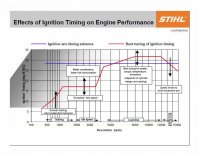Ozarker
Well-Known OPE Member
- Local time
- 7:21 PM
- User ID
- 589
- Joined
- Jan 18, 2016
- Messages
- 62
- Reaction score
- 137
- Location
- Boston Mountains, Ozark Plateau
There's a lot written about limited coils, but does anyone know how they're made to be limited, and how it is that they come into play at certain rpms? Is this all a matter of electronic circuitry, or is there some other method employed?
Does anyone know at what rpm they kick in? I would expect that this would vary somewhat between models, and manufacturers but perhaps not?
Does anyone know at what rpm they kick in? I would expect that this would vary somewhat between models, and manufacturers but perhaps not?







